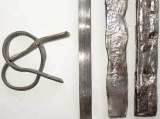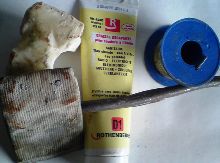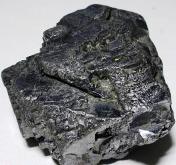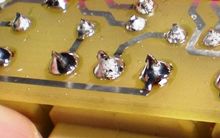Lead and its properties
 Lead — a very soft light gray metal with high plasticity and corrosion resistance to many reagents (sulphuric and hydrochloric acid solutions, ammonia and some others).
Lead — a very soft light gray metal with high plasticity and corrosion resistance to many reagents (sulphuric and hydrochloric acid solutions, ammonia and some others).
Due to its high plasticity, flexibility and relatively low melting point (327 ° C), lead is widely used for the production of protective sheaths for electrical cables. The flexible lead sheath protects the cable from moisture and other agents that reduce the quality of the insulation.
 Lead is also used to obtain soft tin lead solders (class POS-30, POS-40, POS-61, etc.), as well as in the production of fuses and plates for acid batteries.
Lead is also used to obtain soft tin lead solders (class POS-30, POS-40, POS-61, etc.), as well as in the production of fuses and plates for acid batteries.
A characteristic property of lead is that it absorbs X-rays; therefore, lead is used as protective screens in x-ray installations.
Lead has the following characteristics: density 11.35 g / cm2, tensile strength 0.8 — 2.3 kg / cm2, elongation 30 — 40%, resistance 0.207 — 0.222 ohm x mm2 / m, temperature coefficient of resistance 0.00387- 0.00411 1 / ° C.
Lead is produced in six grades, which differ in the content of impurities (iron, copper, bismuth, magnesium, arsenic, etc.).
 The disadvantages of lead are: poor vibration resistance, which is due to its coarse crystal structure and low corrosion resistance to decomposing organic substances, as well as solutions of lime, concrete and some others.
The disadvantages of lead are: poor vibration resistance, which is due to its coarse crystal structure and low corrosion resistance to decomposing organic substances, as well as solutions of lime, concrete and some others.
Lead-sheathed cables are not recommended to be laid on bridge overpasses, near roads and in other places where shocks and vibrations are possible that cause destruction of the lead.
In order to increase the vibration resistance and mechanical strength of lead, various additives are introduced into it: antimony, copper, cadmium, etc.
 Lead, fumes from molten lead and various lead compounds are poisonous. Work with molten lead must be carried out in special, well-ventilated chambers.
Lead, fumes from molten lead and various lead compounds are poisonous. Work with molten lead must be carried out in special, well-ventilated chambers.
Lead and its compounds (lead oxide PbO, red lead Rb3O4 and others) can enter the body through the skin in contact with lead products. Therefore, wash your hands thoroughly after handling lead. When working with lead, it is recommended to wear protective gloves.
Lead is a scarce metal and in the production of cables it is replaced by aluminum or synthetic materials (polyvinyl chloride, polyethylene) from which the protective sheaths of the cables are made.
